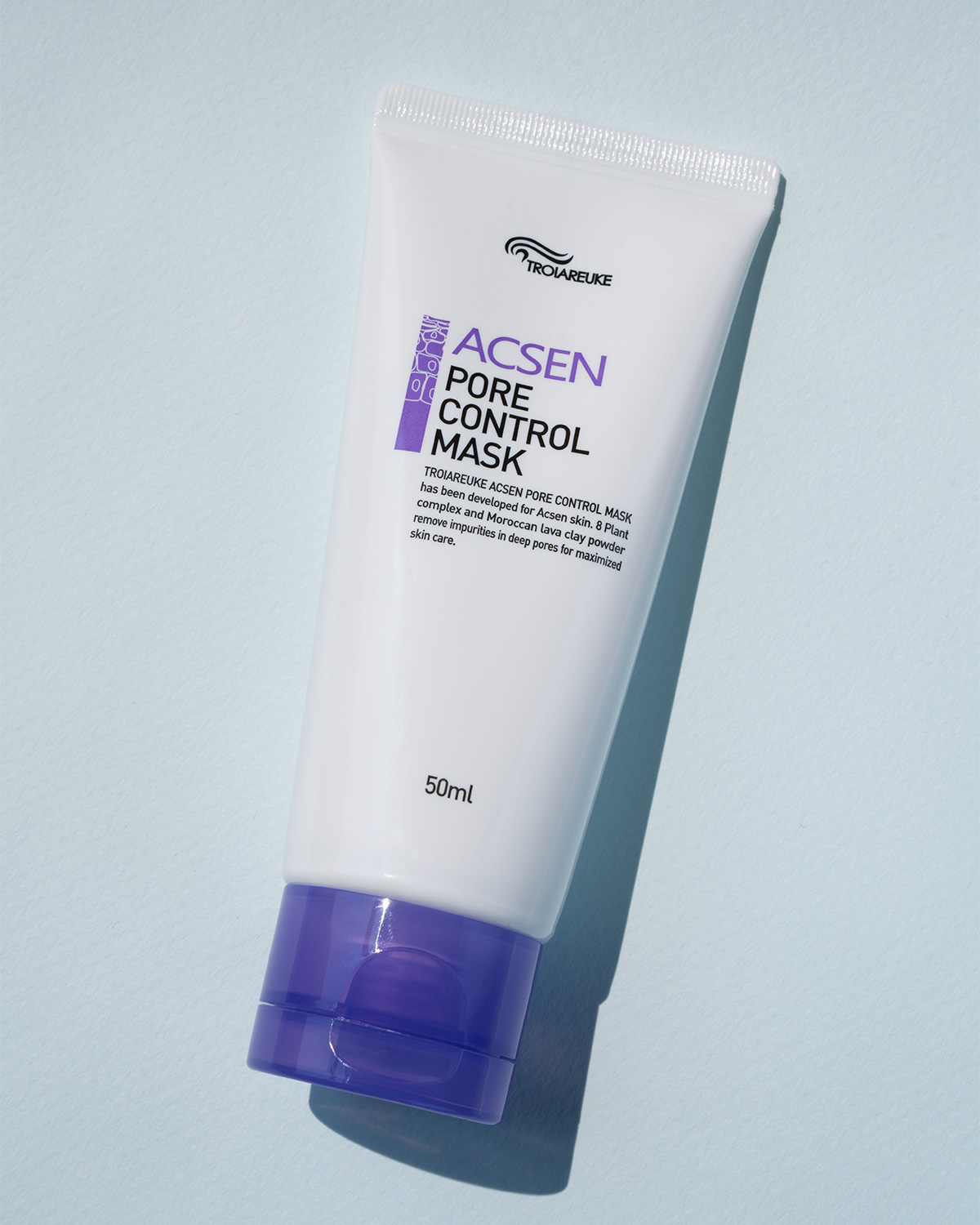Do you multi-mask? If you are stuck at home these days, this is the perfect time to experiment and try double (or even triple) masking. Face and sheet masks are not always one-size-fits-all when it comes to treating your skin concerns, which is why we love to mix and match clays, gels, sheets, and sleeping packs to achieve maximum results. Read on to learn more about our favorite ways to multi-mask with K-beauty products.
As with most K-Beauty lovers, I’m a mask addict. I sheet mask at least three times a week if not every day, and am constantly trying new clay masks, gel masks, chemical peels… the list goes on.
Sometimes it’s hard to choose just one mask to use in the precious 30 minutes I have before bed each night because not every area of my face is in need of the same thing. For example, parts of my face might be a bit dry, while others might be more oily. That’s why I like to mix my masks.
Sheet Mask + Eye Mask
I love a good sheet mask, but every now and then, I get a little frustrated because while most areas of my face feel dewy and hydrated after sheet masking, some areas around my eyes always feel left out.
The eye holes in sheet masks aren’t just there so you can see while you mask, but many masks are actually formulated with ingredients that aren’t great for the sensitive skin around the eye area.
This is why one of my favorite ways to multi-mask is to wear an eye mask underneath a sheet mask. Not only does it give my eyes the extra love it deserves, but it also makes the masking experience even more soothing and relaxing.
RELATED: Quench Dehydrated Skin with These Top-Rated Sheet Masks
The Benton Snail Bee Ultimate Hydrogel Eye Patch is my go-to eye mask. The hydrogel patches are embedded with gold, pearl, diamond and charcoal powders to firm and revitalize the skin while the essence, infused with snail secretion ferment filtrate, seaweed extract and tea tree leaf water, work to hydrate, brighten, soothe and cool the skin around the delicate eye area.
While the eye mask is working its magic, pair it with the Mediheal N.M.F. Intensive Hydrating Sheet Mask to give the rest of your face a boost of hydration. This 2019 Soko Glam Best of K-beauty™ award-winning and innovative sheet mask is formulated with hyaluronic acid, amino acids and water-binding sugars that work together to help maintain the skin’s hydration levels. The result? Super hydrated, soft and supple skin.
Clay Mask + Gel Mask
If you have combination skin or are experiencing skin congestion on your T-zone and dry patches on your cheeks, you are a perfect candidate for multi-masking.
RELATED: The Best Overnight Masks for Every Skin Type
Apply a clay mask that controls excess sebum production and removes impurities, like the Troiareuke Acsen Pore Control Mask, on your T-zone. This mask is blended with Moroccan lava, kaolin and bentonite clays to help clear the skin, while centella asiatica extract reduces inflammation and calms flare-ups.
Once you’ve applied the clay mask to the T-zone area and it’s begun to set, then apply a nourishing cream or gel mask on the rest of your face, such as the Thank You Farmer Back to Relax Soothing Gel Mask. This cooling gel mask will hydrate, plump, and soothe your skin, while the clay mask works to detoxify your clogged pores.
Exfoliating Mask + Sheet Mask
Multi-masking doesn’t always need to involve using two masks at once; it can also mean using one right after the other. This method can be used to prevent potential irritating side effects of certain masks.
For example, when you use a chemical peel or an exfoliating mask, your skin may become a bit red or sensitized. While this is normal (to an extent – make sure you aren’t over-exfoliating!), it can be beneficial to follow up with a soothing sheet mask.
RELATED: How to Use At-Home Chemical Peels
I recommend following your exfoliating masks and peels with a sheet mask like the Dewytree Cica 100 Mask. The Dewytree sheet mask contains only a single ingredient of 100% centella asiatica extract, a popular K-beauty ingredient known for its calming, soothing and collagen-producing properties. It’s a perfect way to calm your skin down after an exfoliation session.
Serum/Ampoule + Sleeping Mask
Serums and ampoules aren’t masks, but they’re formulated to seriously amplify the effects of your other products, especially your cream and gel masks. For my night skin care routine, I like to mix a serum or an ampoule with my sleeping pack to wake up to an extra glowy and nourished skin.
For example, you could mix the Neogen Real Ferment Micro Serum, which is formulated with 61% fermented ingredients, with the E Nature Skin Pot Sleeping Pack. While fermented ingredients like bifida ferment lysate and rice ferment filtrate in the serum help to improve skin elasticity and dull, uneven skin tone, the hemp seed oil in the mask helps to hydrate, soothe irritated skin, and target fine lines and wrinkles.
I also recommend mixing the Neogen Real Vita C Powder Lemon with your serum or ampoule to get that extra boost of vitamin C in your multi-masking routine. Mix one scoop of the powder (the perfectly measured scoop is included with the product!) and wait about 5-10 for it to dissolve in your serum or ampoule before applying your sleeping mask. You will wake up to a glowing complexion.
Bottom Line
When it comes to masking, more really can mean more… more benefits, that is! Different areas of your skin have their varying needs, so using only one mask to treat all of your skin concerns won’t do the trick. Whether you divvy up equal parts clay and gel, or concoct a sleeping pack and ampoule cocktail, mixing masks can help give your skin the full treatment it deserves.
If you don’t have more than one mask, or even a serum and ampoule, try investing in some skin care sets to help you kick-start your multi-masking journey:
The Staycation Essentials Set is a 14-piece skin care discovery set that just launched and is exclusive to Soko Glam. While the set includes other deluxe sample size products such as cleansers, toners, and moisturizers (and a full-size SPF!), it also contains all of my favorite sheet masks, serums and ampoules I mentioned above, including the Dewytree Cica 100 Mask, Mediheal N.M.F. Intensive Hydrating Sheet Mask, Neogen Real Ferment Micro Serum and Neogen Real Vita C Powder Lemon. The perfect set for an at-home facial and multi-masking routine.
Glow Essentials: Mask + Moisture set from Glamglow has five of its classic and top-rated mud masks treatments that target different skin concerns, from dry and flaky skin to acne and blemishes.
If you are fans of K-pop group BTS, then the Mediheal x BTS Hydration Care Special Set is definitely a mask set you want to invest in. This special sheet mask set comes with 10 sheet masks, 5 of which are Mediheal’s popular N.M.F. Aquaring Ampoule Mask Ex that has amazing hydrating benefits. The other five are Mediheal’s Tea Tree Care solution Mask Ex, which is a great sheet mask for clearing and soothing acne-prone skin. As an added bonus, the set also comes with 14 exclusive limited-edition BTS photo cards.

















